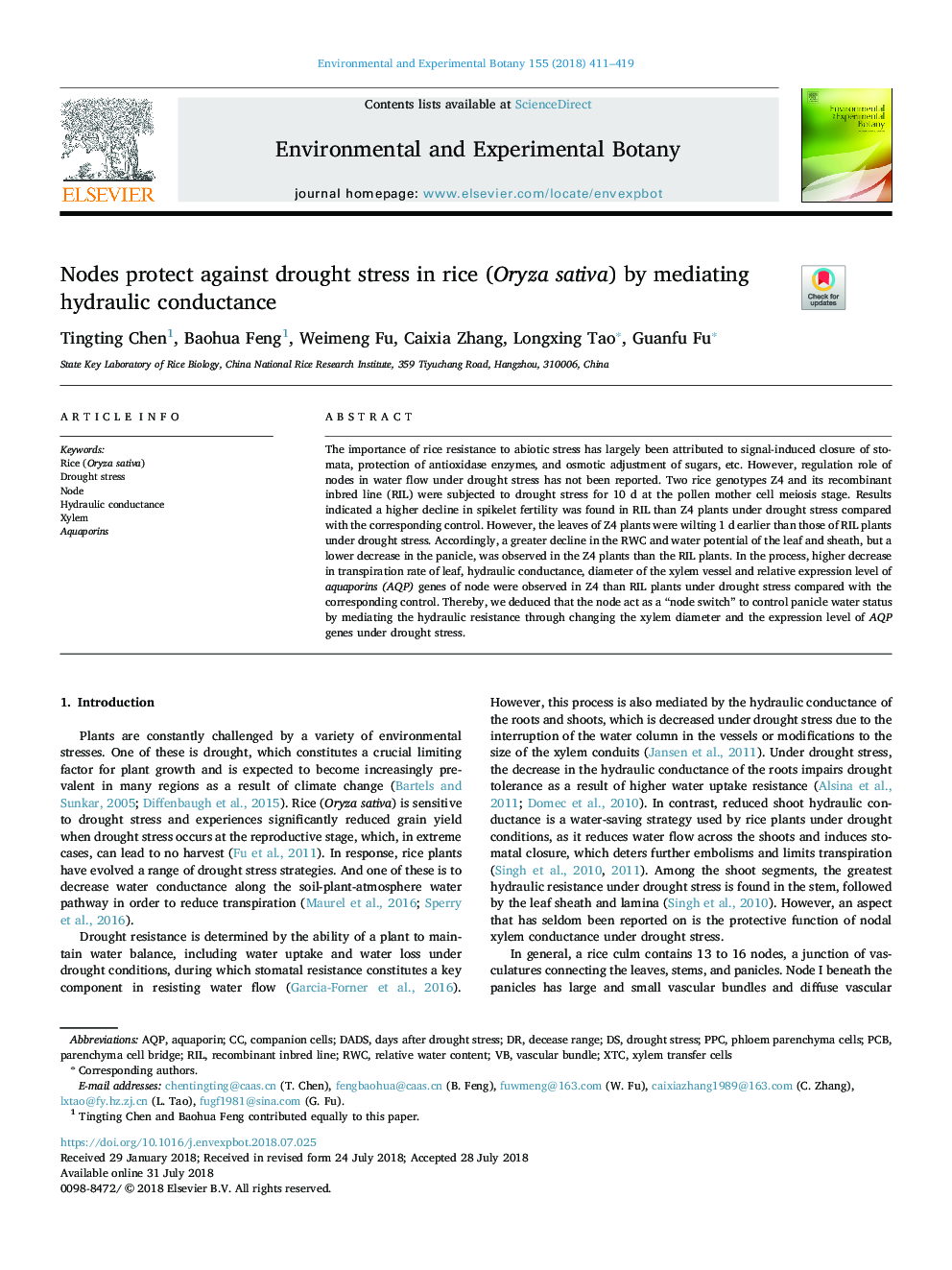| Article ID | Journal | Published Year | Pages | File Type |
|---|---|---|---|---|
| 8886879 | Environmental and Experimental Botany | 2018 | 9 Pages |
Abstract
The importance of rice resistance to abiotic stress has largely been attributed to signal-induced closure of stomata, protection of antioxidase enzymes, and osmotic adjustment of sugars, etc. However, regulation role of nodes in water flow under drought stress has not been reported. Two rice genotypes Z4 and its recombinant inbred line (RIL) were subjected to drought stress for 10 d at the pollen mother cell meiosis stage. Results indicated a higher decline in spikelet fertility was found in RIL than Z4 plants under drought stress compared with the corresponding control. However, the leaves of Z4 plants were wilting 1 d earlier than those of RIL plants under drought stress. Accordingly, a greater decline in the RWC and water potential of the leaf and sheath, but a lower decrease in the panicle, was observed in the Z4 plants than the RIL plants. In the process, higher decrease in transpiration rate of leaf, hydraulic conductance, diameter of the xylem vessel and relative expression level of aquaporins (AQP) genes of node were observed in Z4 than RIL plants under drought stress compared with the corresponding control. Thereby, we deduced that the node act as a “node switch” to control panicle water status by mediating the hydraulic resistance through changing the xylem diameter and the expression level of AQP genes under drought stress.
Keywords
Related Topics
Life Sciences
Agricultural and Biological Sciences
Ecology, Evolution, Behavior and Systematics
Authors
Tingting Chen, Baohua Feng, Weimeng Fu, Caixia Zhang, Longxing Tao, Guanfu Fu,
